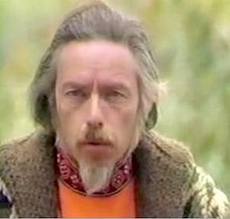Alan Watts
Famous visionary philosopher whose ideas were ahead of his time, and now finally becoming more popularly recognized for his profound wisdom.
~Scroll down for Bio~
Check out our other posts about Alan Watts here >
BOOKS:
-
The Book: On the Taboo Against Knowing Who You Are
-
Alan Watts on Tao: The Watercourse Way
-
Alan Watts: The Way of Zen

Alan Watts was born in London in 1915, at the start of the first World War. At a young age he became fascinated with the Far East, and at fourteen he began to write and was published in the Journal of the London Buddhist Lodge before writing his first booklet on Zen in 1932. He moved to New York in 1938 and then to Chicago, where he served as an Episcopal priest for six years before leaving the Church. In 1950, he moved to upstate New York before going on to San Francisco to teach at the Academy of Asian Studies. Among Alan Watts’ earliest influences were the novelist Sax Rohmer and Zen scholars D.T. Suzuki and Christmas Humpreys. In late 1950, he visited with Joseph Campbell and composer John Cage in NYC.
Worldview
Alan Watts was profoundly influenced by the East Indian philosophies of Vedanta and Buddhism, and by Taoist thought, which is reflected in Zen poetry and the arts of China and Japan. After leaving the Church, he never became a member of another organized religion, and although he wrote and spoke extensively about Zen Buddhism, he was criticized by American Buddhist practicioners for not sitting regularly in zazen. Alan Watts responded simply by saying, “A cat sits until it is done sitting, and then gets up, stretches, and walks away.”









